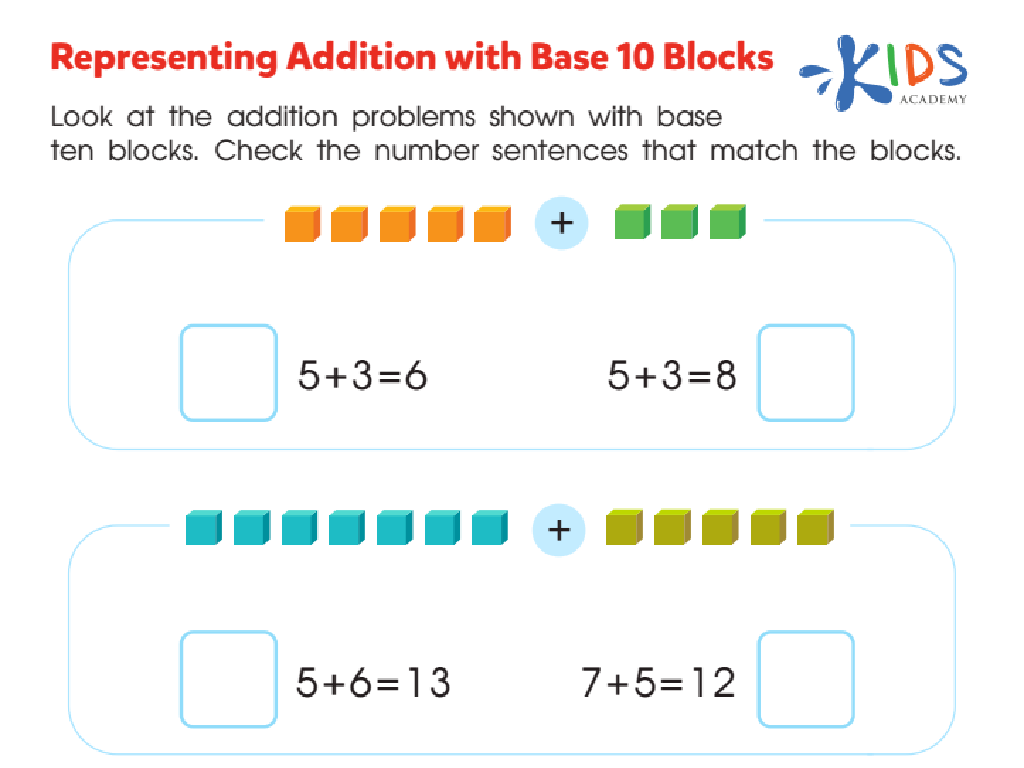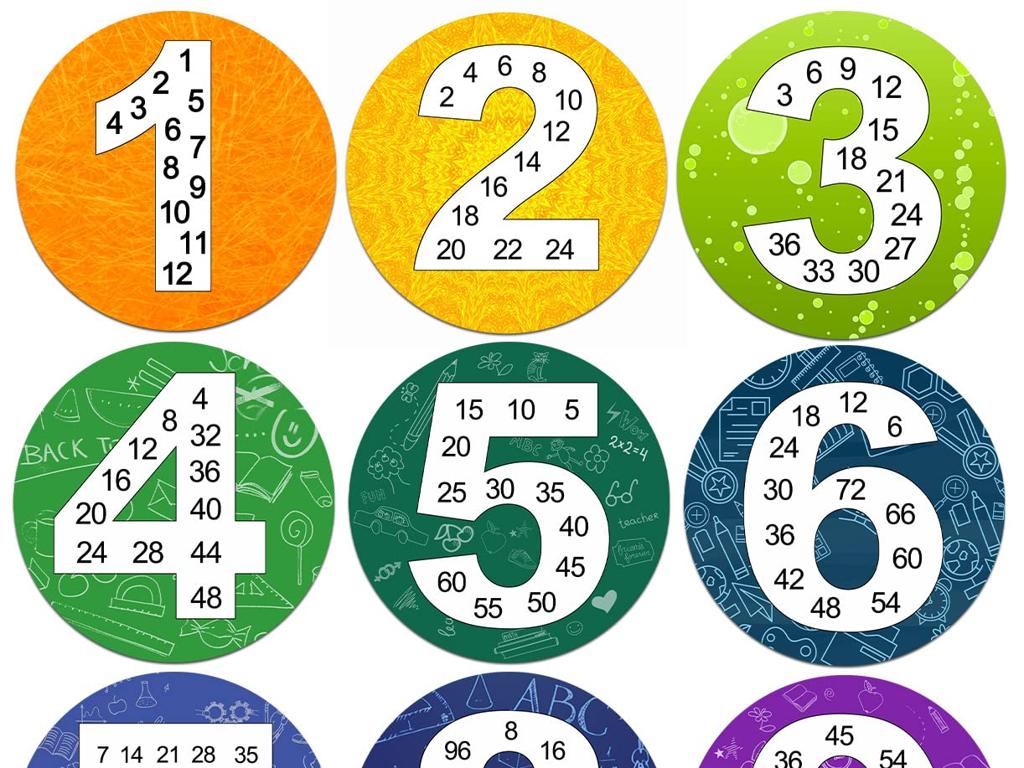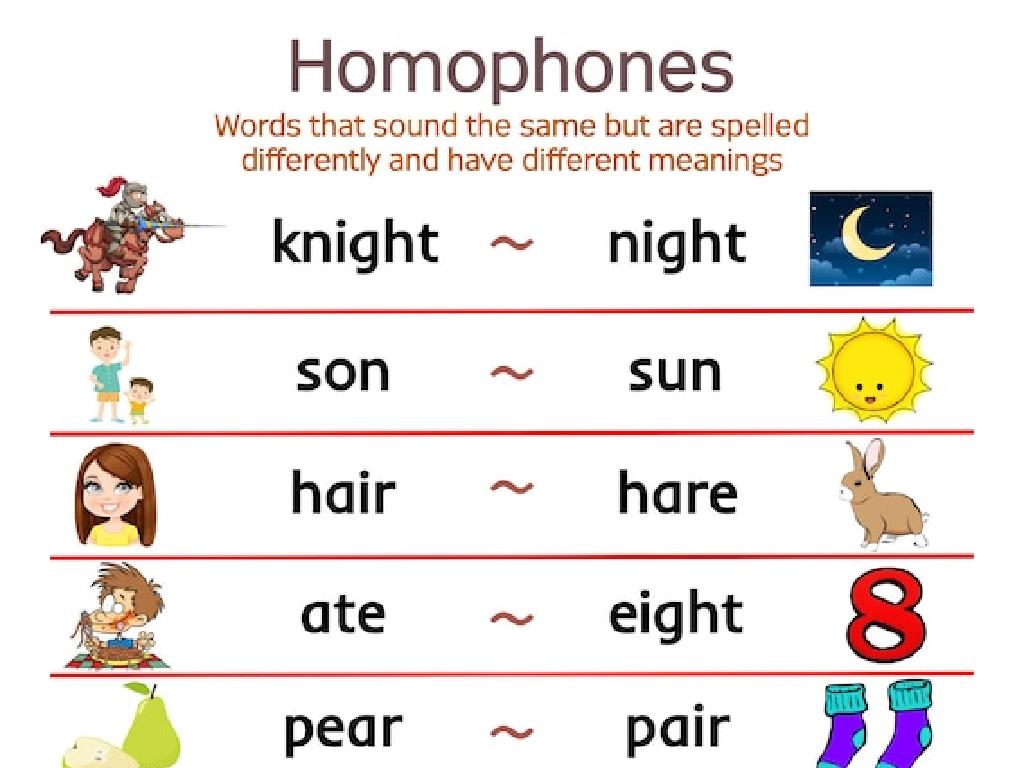Skip-Counting
Subject: Math
Grade: Third grade
Topic: Skip-Counting
Please LOG IN to download the presentation. Access is available to registered users only.
View More Content
Welcome to Skip-Counting!
– Understanding Skip-Counting
– Counting by numbers other than 1, like 2, 5, or 10
– The usefulness of Skip-Counting
– Helps with multiplication, telling time, and counting money
– Skip-Counting in daily life
– Using skip-counting to count coins or tally scores in games
– Practice with examples
|
This slide introduces the concept of skip-counting, an essential skill in elementary mathematics that facilitates easier calculation and understanding of number patterns. Skip-counting is counting forwards or backwards by a number other than one. It’s a foundational skill that supports learning multiplication and division, understanding number sense, and developing the ability to count objects quickly. Examples include counting by twos to tally shoes or by fives to count minutes on a clock. Encourage students to think of situations where they have used skip-counting in their lives, such as adding up scores in a game or counting pocket change. Provide a variety of examples and engage the class in practicing skip-counting together.
Understanding Skip-Counting
– Learn to skip-count by 2s, 5s, and 10s
– Counting in intervals: 2, 4, 6, 8…; 5, 10, 15, 20…; 10, 20, 30, 40…
– Skip-counting: Hopping over numbers
– Imagine jumping on a number line: skip one number for 2s, four for 5s, and nine for 10s
– Group activity: Count by 2s
– We’ll count together as a class, starting from 2 and adding 2 each time
|
This slide introduces the concept of skip-counting, a fundamental skill in understanding number patterns and preparing for multiplication. Explain that skip-counting by 2s, 5s, and 10s is a way to count faster by ‘hopping’ over numbers. Use visuals like a number line or a hopscotch grid to illustrate the concept of jumping over numbers. During the group activity, engage the class by counting aloud by 2s, and encourage them to participate. This interactive approach helps solidify the concept and makes learning fun. Prepare to offer guidance and correct any mistakes as students practice together.
Skip-Counting Patterns
– Identify skip-counting patterns
– Patterns like 2, 4, 6 show we’re counting by 2s
– Predict next numbers in sequence
– What comes after 8, 10, 12 when we skip-count by 2s?
– Activity: Complete the number chart
– Fill in blanks on a chart, counting by 2s, 5s, or 10s
|
This slide introduces students to the concept of skip-counting patterns, an essential skill in understanding number sequences and building a foundation for multiplication. Start by explaining how to identify patterns when skip-counting by different numbers, such as 2s, 5s, or 10s. Engage the class by asking them to predict the next numbers in a given sequence. For the activity, provide a number chart with missing numbers and instruct students to fill in the blanks by skip-counting. This hands-on activity reinforces their learning and helps them visualize the patterns. Possible variations for the activity could include using different starting points, skip-counting by different intervals, or creating a human number line in the classroom.
Skip-Counting with Money
– Skip-count by 5s with nickels
– Each nickel is 5 cents, so count 5, 10, 15, …
– Skip-count by 10s with dimes
– Each dime is 10 cents, count 10, 20, 30, …
– Calculate nickels to make a dollar
– There are 20 nickels in a dollar because 20 x 5 = 100
– Practice with real coins
|
This slide introduces students to the concept of skip-counting using money, which is a practical and engaging way to learn. Start by explaining that each nickel is worth 5 cents, so when we skip-count by 5s, we’re counting the value of each nickel. Similarly, each dime is worth 10 cents, and skip-counting by 10s helps us count dimes. For the class exercise, guide students to understand that since a dollar is 100 cents, and each nickel is 5 cents, it takes 20 nickels to make a dollar. Encourage students to use real nickels and dimes to practice skip-counting, which will help them visualize and understand the concept better. Provide additional examples and exercises for students to practice skip-counting with different coin values.
Skip-Counting in Multiplication
– Understanding multiplication via skip-counting
– Skip-counting lays the foundation for understanding multiplication as repeated addition.
– Solving multiplication with skip-counting
– Instead of adding 2 four times, we can skip-count by 2’s to reach the same answer quickly.
– Example: 4 groups of 2
– 2, 4, 6, 8. We counted by 2’s four times to get 8, which is 4 x 2.
|
This slide aims to show students how skip-counting is not just a counting exercise but a fundamental concept in understanding and solving multiplication problems. By recognizing that multiplication is essentially repeated addition, students can use skip-counting as a strategy to solve simple multiplication problems efficiently. For example, to multiply 4 by 2, students can count by 2’s four times (2, 4, 6, 8) to arrive at the answer, 8. This method is particularly effective for visual and kinesthetic learners as it allows them to see and feel the process of multiplication. Encourage students to practice skip-counting with different numbers and to use this technique to solve various multiplication problems.
Let’s Practice Skip-Counting Together!
– Play ‘Skip-Counting Race’
– An interactive game to count by 2s, 5s, 10s
– Engage in ‘Number Line Leap Frog’
– A group activity using a number line to skip-count
– Complete ‘Skip-Counting Challenge’
– A worksheet to practice skip-counting individually
– Share what you’ve learned
|
This slide is designed to engage students in active learning through a variety of activities. ‘Skip-Counting Race’ is an interactive game where students can practice counting by 2s, 5s, and 10s in a fun, competitive setting. ‘Number Line Leap Frog’ is a group activity that encourages teamwork and understanding of number sequences on a number line. The ‘Skip-Counting Challenge’ worksheet allows individual practice and assessment of skip-counting skills. Encourage students to share their strategies and what they’ve learned from each activity. For the teacher: Prepare the interactive game and number line in advance, and ensure the worksheet is suitable for the students’ skill level. Consider offering small prizes for engagement and accuracy during the activities.
Skip-Counting Mastery Celebration
– Review skip-counting concepts
– Let’s recall how to skip-count by 2s, 5s, and 10s
– Interactive Q&A session
– What questions do you have about skip-counting?
– Recognize Skip-Counting Superstars
– Awarding certificates to our skip-counting experts!
– Celebrate our skip-counting skills
|
This slide is aimed at consolidating the students’ knowledge of skip-counting. Begin with a review of the skip-counting techniques previously learned, focusing on counting by 2s, 5s, and 10s. Engage the students in an interactive Q&A session to clarify any doubts and reinforce their understanding. Celebrate the students who have shown exceptional skills in skip-counting by awarding them certificates, making it a special moment for them. Encourage all students by acknowledging their progress and efforts in mastering skip-counting. This will not only boost their confidence but also motivate them to continue practicing their math skills.
Class Activity: Skip-Counting Scavenger Hunt
– Understand scavenger hunt rules
– Find items to count by 2s, 5s, 10s
– e.g., pencils, books, or chairs for counting
– Work together in teams
– Teamwork is key, help each other
– Complete the scavenger hunt list
– Each team presents their counted items
|
This activity is designed to make learning skip-counting interactive and fun. Divide the class into small teams and explain the rules of the scavenger hunt. Each team will search for items around the classroom that can be counted by 2s, 5s, and 10s, such as pencils for counting by 2s, fingers for 5s, and groups of items for 10s. Encourage teamwork and collaboration as they work through their lists. After the activity, have each team present their findings to the class, reinforcing their skip-counting skills. Possible variations include counting items in pictures, using manipulatives, or incorporating outdoor elements if the classroom setting allows.






